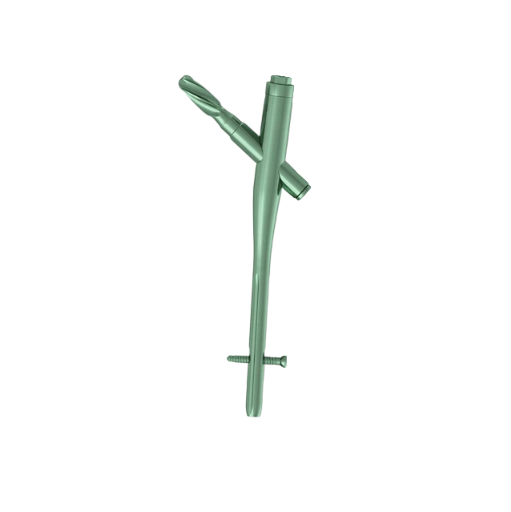E-mail iNfo@virkortho.shop Number +92-300-7477492

Gamma Nail
Gamma Nail is indicated for treatment of stable and unstable fractures as well as for stabilization of bones and correction of bone deformities in the intracapsular, trochanteric, subtrochanteric and shaft regions of femur
Gamma Nail Sizes and Uses.
Gamma Nail Sizes
Length 170 mm
Dia 10mm, 11mm and 12mm
Length 180 mm
Dia 10mm, 11mm and 12mm
Length 200 mm
Dia 10mm, 11mm and 12mm
Length 240 mm to 440 mm
Dia 10mm, 11mm, 12mm, 13mm and 14mm , Left and Right
Gamma Nail Uses
Gamma Nail short (Length 170 mm, 180 mm and 200 mm)
Indications
Pertrochanteric fractures
High subtrochanteric fractures
Contraindications
Low subtrochanteric fractures
Femoral shaft fractures
Isolated or combined medial femoral neck fractures
Gamma Nail long (Length 240 mm – 440 mm)
Indications
Low and extended subtrochanteric fractures
Ipsilateral trochanteric fractures
Combination fractures (in the proximal femur)
Pathological fractures
Contraindications
Isolated or combined medial femoral neck fractures
Advantages of Gamma Nail
When treating femoral fractures, the gamma nail has a number of benefits. First of all, it stabilizes the fractured bone right away, lowering the possibility of additional displacement or harm. Early mobility and weight-bearing are made possible by this stability, which may hasten healing and enhance functional outcomes. Gamma nail design also minimizes damage to surrounding soft tissues, which lessens postoperative pain and problems
The Gamma Nail has a medial-lateral angle of 6°. This allows insertion at the tip of the greater trochanter.
Several distal locking options: Static or dynamic locking can be performed via the aiming arm with Gamma small . The Gamma long additionally allows for secondary dynamization.
The Gamma Nail is available in 4 sizes
Small, length 170 mm
Small, length 180 mm
Medium, length 200 mm
Large, length 240-440 mm, Left & Right
Inserting the Gamma Lag Screw compacts the cancellous bone providing additional anchoring, which is especially important in osteoporotic bone.
Increased stability caused by bone compaction around the Gamma Lag Screw has been biomechanically proven to retard rotation and varus collapse. Biomechanical tests have demonstrated that the Lag Screw had a significantly higher cut-out resistance in comparison with commonly-used screw systems.
All surgical steps required to insert the Lag Screw are performed through lateral incision.
About
Exceptional orthopedic instruments and implants from Pakistan.
Contact
Portfolio
© 2025 All rights reserved.
Location
Quick Link